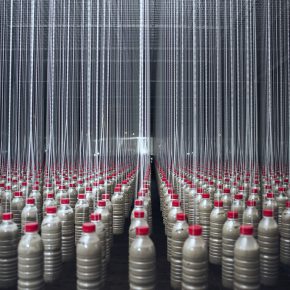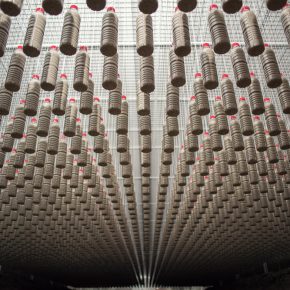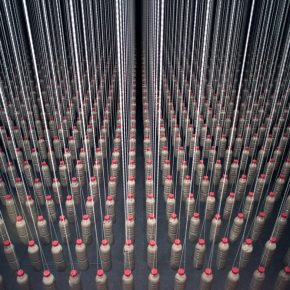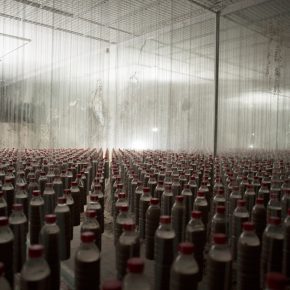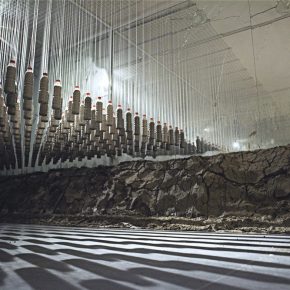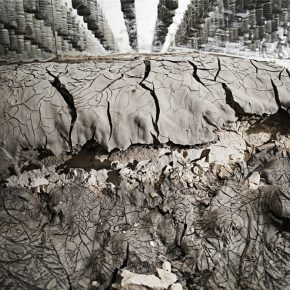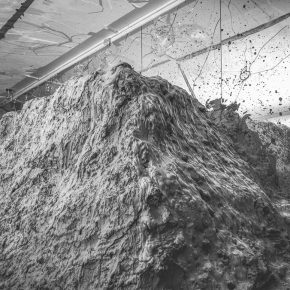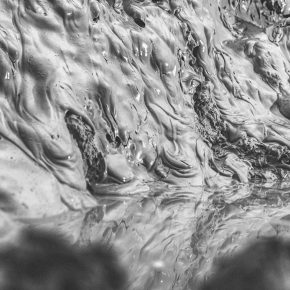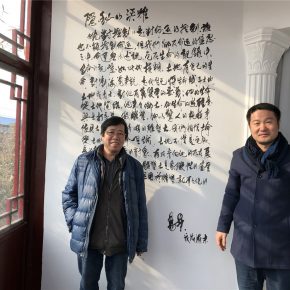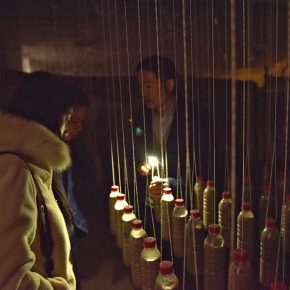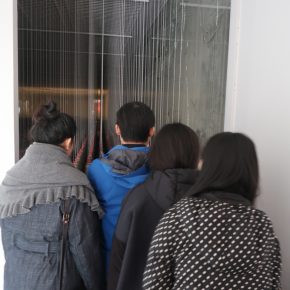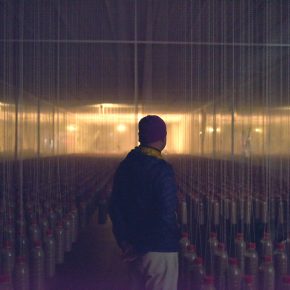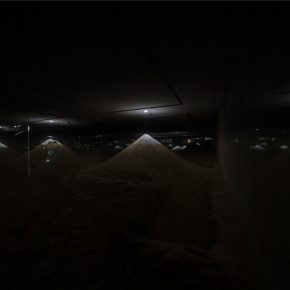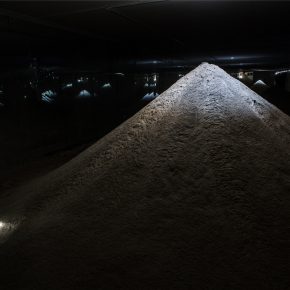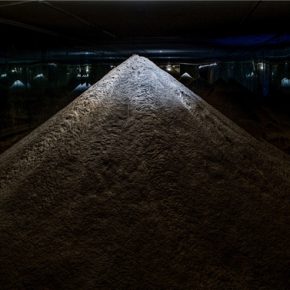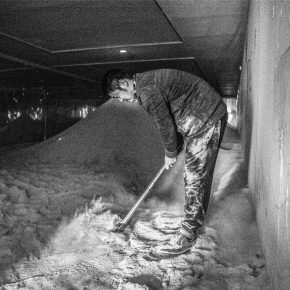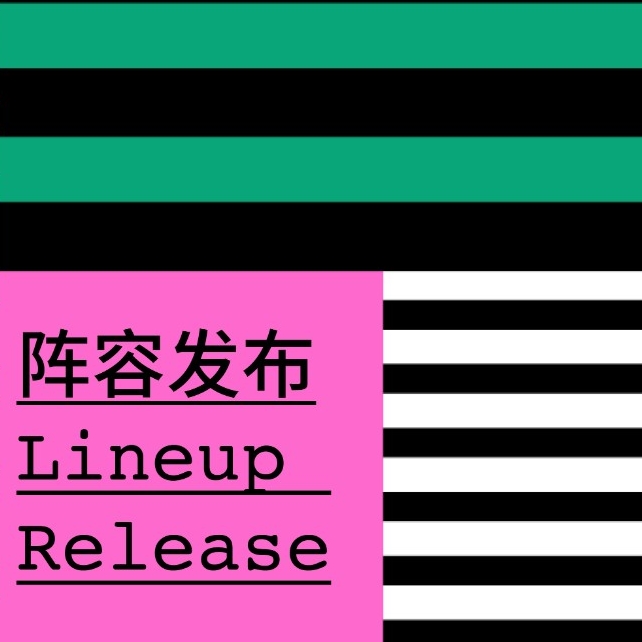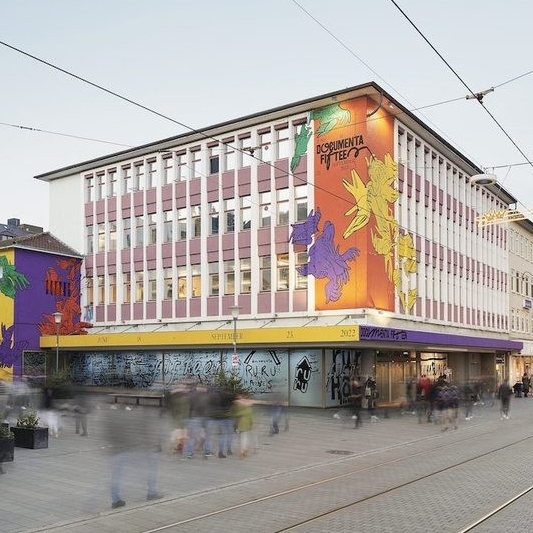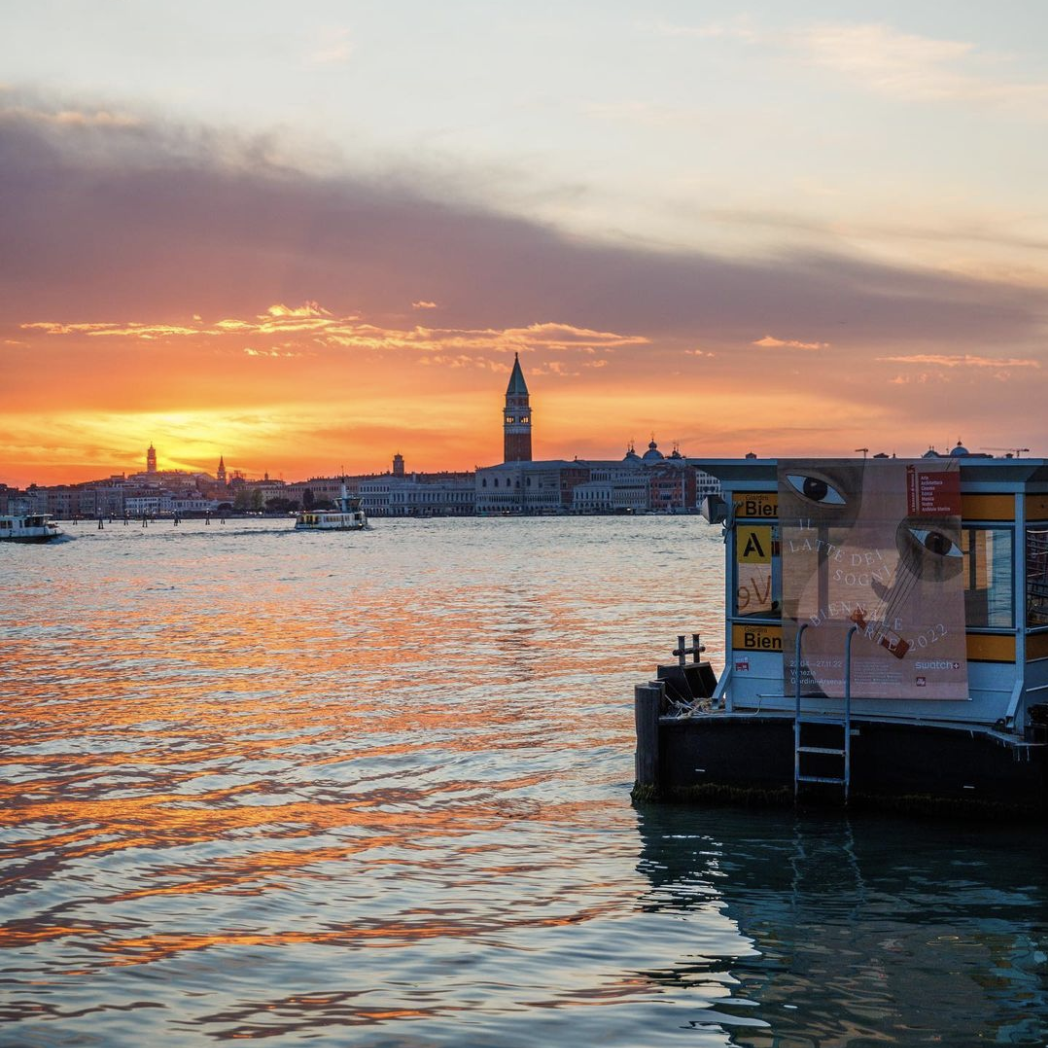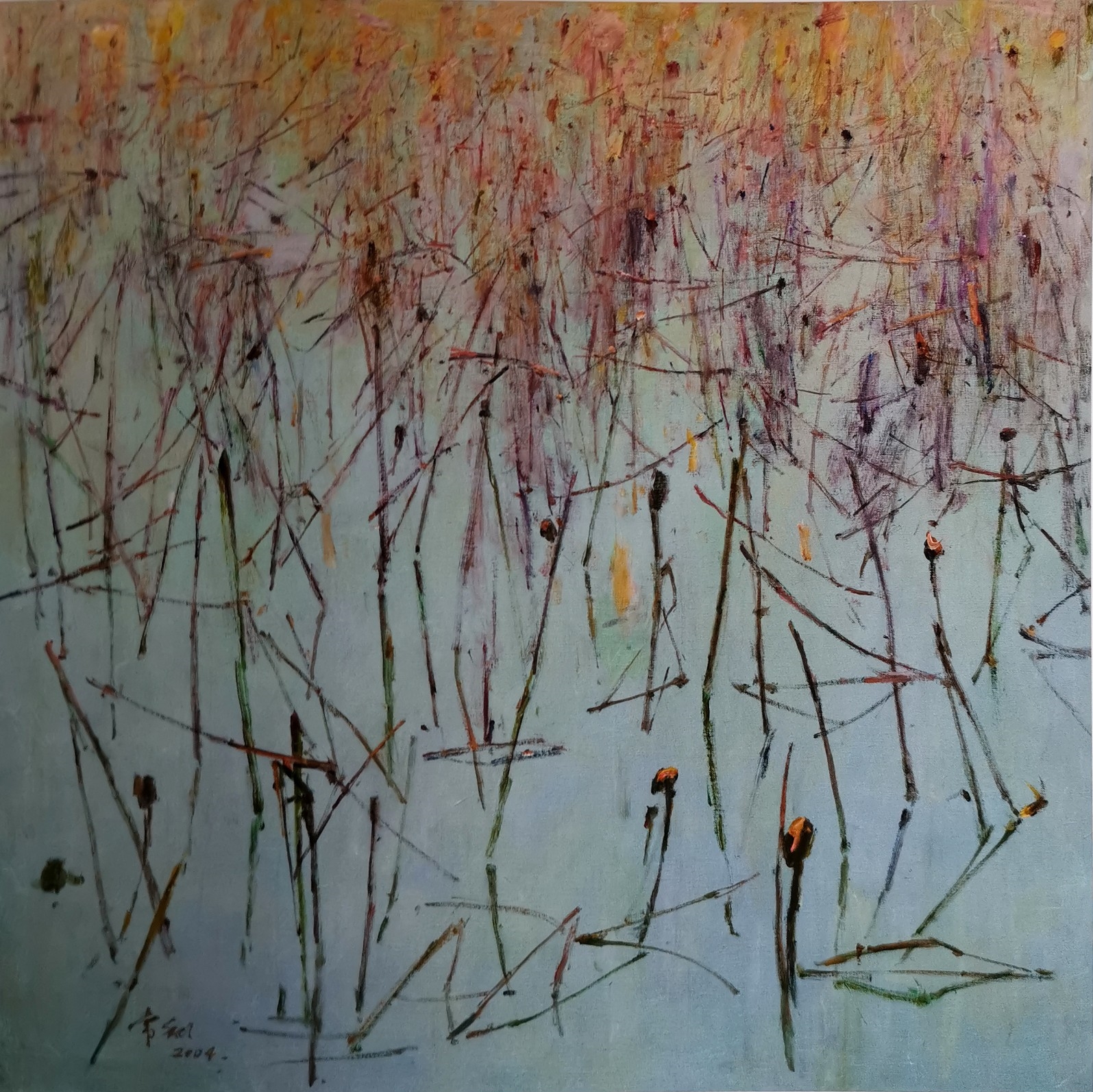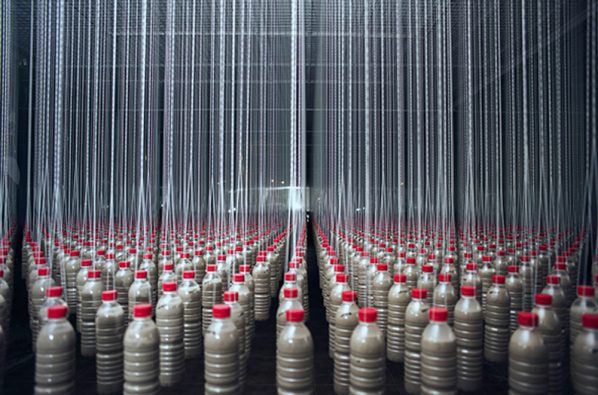
“Absolute Control” is the control of destiny. No one can control it, but we are in the anxiety of destiny.
—Yi Ying
The Luoma Lake was originally the boundary lake of two natural villages in the suburbs of Beijing. However, due to its suitable distance between the urban and the rural areas as well as convenient transportation, it has become a gathering place for many artists. The transition of cultural art and urban and rural developments have staged a magical realistic drama here. Liu Haigang is one of the artists who live here. Many years ago, Liu Haigang rented a yard on the west side of the left bank of the Luoma Lake. Since 2017, he decided to start from this suburban space while combining with his life experience and living conditions to create an experimental project. This is the series of “Absolute Control”. On April 9, 2019, “Absolute Control II” was unveiled at the Wu Xun Gallery. The exhibition invited art critic Yi Ying as academic chair, and Zheng Yan, a professor from the Central Academy of Fine Arts, served as curator. If “Absolute Control I” presents the wildness and darkness of the land and the thought on the individual’s identity, this exhibition emphasizes regulation and crisis awakening that the wild aspect has experienced during the industrial age.
Liu Haigang’s “Absolute Control” is a developing art project. When reviewing his first experiment, Liu Haigang transported more than 160 tons of sculptural clay from the northeast of China and molded a cone-shaped mountain and dug tunnels in the Wu Xun Gallery. The exhibition hall was full of earth. Visitors also needed to wear disposable plastic boots to walk through the space. The dark and closed space is like an underground archaeological space. Only a few beams of skylight were projected from the scuttles, the soul of the work is composed of the voice of countless people reading the Buddhist scriptures, which pervaded the exhibition space and constituted a very exotic experience. The traces of creation and visits at that time were still there. Now when we enter the Wu Xun Gallery, the dim light is still visible under the reflection of the mirrors and the mounds of the sculptured clay are still visible. There are still skylights from the holes in the roof and “flowing sand” from the wall. On April 9th, at the opening of “Absolute Control II”, the quicksand disappeared, but thousands of mineral water bottles were added. Liu Haigang stuffed the sand into the bottles and injected them with water. They were hung in this dark space and formed a different cultural landscape which seems to represent a conflict between the land that stands for nature and the mineral water bottle that symbolises civilization. Compared with the first exhibition which guided the audience into the “muddy” immersion experience, this exhibition is set in a “separated” space. The actual length for the exhibition is very short, and one can only watch “the other side” of the work from one side, or lean over and walk under the work. The uniformity of the mineral water bottles, the dim light and the reflection of the wall mirrors all visually magnify the volume of the work and deepen the feeling of sorrow when facing this work. An audio is hoisted at the top of the entrance of the exhibition, and Buddhist music is played in a loop. The artist’s own explanation is to find something that can fill in this space with maximum potential. The music floats in this dark closed space that sounds more like a powerless rescue.
In terms of materials, Liu Haigang’s art experiment is to think and expand the boundary of the sculpture from the soil, water and mineral water bottles. This is his own academic vision. He majored in contemporary sculpture with his doctoral studies at the Central Academy of Fine Arts. But from this work we can find more about where he comes from as a social individual and how it relates to the current social ecology. Liu Haigang grew up in the countryside. When he was young, he studied woodwork with his father and worked as a construction worker. All of us grow up on the land, but the experience of Liu Haigang was more real and profound as this is the first layer of significance showing what earth art means to him. The sculptural clay indicated his later life experience. For the use of this medium by Liu Haigang, Professor Yi Ying, the academic chair of the exhibition, believes that Liu has developed from the land into a reflection on the nature of human beings and developed into a relationship with society. Liu does not look upon the land as dependent on human life and he also assumes that there is a conversion of the relationship after the absence of land, it may be an environmental and ecological consideration. Filling the mineral water bottle with earth and water, the art experiments in the first and second sessions will form a confrontation between modern civilization and a primitive state. It’s exactly like the dry state caused by the loss of water in the mud at the corner of the exhibition, which can never return to the original state of the water. For the protagonist of the second exhibition, “mineral water bottle”, Professor Yi Ying believes that this is an intermediary, one is connected with the water that sustains life, and the other is linked to the control of water, because of the lack of water and the destruction of water, human beings have to replace natural water with civilized water. The appearance of mineral water is on the surface an improvement, but it actually indicates an ecological crisis. Mineral water exists because of the lack of water or water pollution. Therefore, the absolute control of Liu Haigang conveys a profound meaning on the state in life crisis.
For the artist Liu Haigang, “Absolute Control” is a unique way of artistic thinking. He has been insisting on the creation of ink painting since 2006. At first, his creations were just unconscious outlets, but by 2017 he came to a conclusion. Persistence is actually “a control”, not only the control of ink technology, but also another viewpoint and method of his observation on the world. In this art experiment, “absolute control” is a form of conflict and anti-conflict competition. Mineral water bottles are a symbol of the conflict between nature and civilization, and also a symbol of the conflict between industrial development and ecological crisis. In fact, for the magical realism of the Luoma Lake, there is another meaning. This art area has grown up in the rural space. You can hear the crowing of cocks and the barking of dogs, but the survival crisis has emerged in the tide of urban construction and development. Therefore, when asked about the exhibition he has already reached the second show and whether it will continue to have a third show, Liu replied in a slightly helpless state as this depends more on how long the space of the gallery can last. Perhaps in the near future this space will disappear in the expansion of the city. This is like the text prompt at the entrance to the exhibition: “Absolute Control is the control of destiny. No one can control it, but we are in the anxiety of destiny.”
The exhibition will remain on view till June 30th.
Text by Zhang Wenzhi, translated and edited by Sue/CAFA ART INFO
Photo Courtesy of the Organizer


